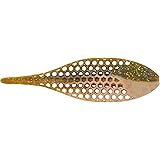Unraveling Wilderness Medicine: Dehydration Versus Altitude Illness at High Altitudes
Estimates suggest that up to 50% of visitors to high-altitude destinations experience some form of acute mountain sickness. This common occurrence often leads to confusion, particularly when symptoms resemble those of simple dehydration. As Dr. Howard J. Donner explains in the accompanying video, discerning between these two conditions is crucial for safe and enjoyable outdoor adventures.
Many outdoor enthusiasts often believe that drinking more fluids can prevent mountain sickness. While hydration is undeniably vital, its direct impact on preventing altitude sickness is not fully proven. Instead, proper fluid intake is primarily effective in preventing dehydration, a condition whose symptoms significantly mimic those of early altitude illness.
Understanding Dehydration at High Altitude
Dehydration occurs when your body loses more fluids than it takes in, a situation easily exacerbated in high-altitude environments. The dry air at elevation increases respiratory water loss, meaning you exhale more moisture with every breath. Additionally, increased physical exertion, sweating, and diuretic effects of altitude further contribute to fluid depletion.
Recognizing the signs of dehydration is the first step toward effective management. Common indicators include a persistent headache, which can range from mild to throbbing. You might also experience general malaise, a vague feeling of discomfort or unease throughout your body. Some individuals also report mild gastrointestinal upset, such as nausea or a loss of appetite.
Imagine if you ascended quickly and started feeling a dull headache and a bit weak. These sensations could easily be mistaken for the initial stages of altitude sickness. Therefore, proactively monitoring your hydration status becomes an essential practice for anyone venturing into mountainous regions.
Key Symptoms of Dehydration
- Persistent headache
- Fatigue and lethargy
- Dizziness or lightheadedness
- Dry mouth and increased thirst
- Decreased urine output
- Dark yellow urine color
- Muscle cramps
A simple yet effective method to assess hydration is checking your urine output and color. Dr. Donner emphasizes this practical approach by asking about urination frequency. If you are urinating infrequently or notice your urine is dark, you are very likely dehydrated and require more fluids.
The Realities of Altitude Illness (Mountain Sickness)
Acute Mountain Sickness (AMS) is the most common form of altitude illness, affecting unacclimatized individuals who ascend too quickly. It is caused by the body’s struggle to adapt to the reduced oxygen availability at higher elevations. Unlike dehydration, AMS is a direct physiological response to hypoxia, or low oxygen levels.
The symptoms of AMS can be surprisingly similar to dehydration, creating much of the confusion Dr. Donner highlights. A headache is a hallmark symptom of AMS, often described as throbbing or pounding. Nausea, sometimes leading to vomiting, and generalized weakness or fatigue are also very common. Additionally, individuals might experience dizziness, lightheadedness, and difficulty sleeping.
It is important to remember that AMS can progress if ignored, leading to more severe and potentially life-threatening conditions. Therefore, early identification and intervention are paramount for wilderness safety. Knowing the difference between this condition and dehydration can significantly impact your health and trip success.
Key Symptoms of Acute Mountain Sickness (AMS)
- Headache (often the first and most prominent symptom)
- Nausea and/or vomiting
- Fatigue or weakness
- Dizziness or lightheadedness
- Difficulty sleeping (insomnia)
- Loss of appetite
The critical distinction often lies in how quickly symptoms resolve with rehydration. As Dr. Donner suggests, if you suspect altitude sickness but haven’t been drinking much, consuming a couple of liters of water and resting for a few hours might alleviate the symptoms. If you feel significantly better after adequate hydration, it was likely dehydration rather than true AMS.
Strategic Hydration for High-Altitude Environments
Maintaining optimal hydration is a cornerstone of wilderness medicine, especially when climbing or trekking at elevation. Your fluid needs increase substantially at high altitudes due to enhanced respiratory rates and drier air. Proper hydration practices are preventive measures that enhance overall well-being and help prevent dehydration-related symptoms.
Aim to drink significantly more fluids than you would at sea level, typically 3-4 liters per day, or even more during strenuous activity. Water is always a good choice, but supplementing with electrolyte-rich beverages can also be beneficial. Electrolytes like sodium, potassium, and magnesium are lost through sweat and are crucial for maintaining fluid balance and muscle function.
Imagine setting out on a long trek and only sipping water occasionally. By mid-day, you’re experiencing a splitting headache and profound fatigue. This scenario perfectly illustrates how quickly dehydration can set in without a conscious effort to drink regularly. Consistently drinking small amounts throughout the day is far more effective than trying to catch up later.
Practical Hydration Tips:
- **Drink Consistently:** Sip water or electrolyte drinks frequently throughout the day, rather than large amounts all at once.
- **Monitor Urine:** Aim for clear or very pale yellow urine, indicating good hydration.
- **Electrolyte Balance:** Consider adding electrolyte tablets or mixes to your water, particularly during heavy exertion.
- **Avoid Dehydrating Beverages:** Limit caffeine and alcohol, as they can contribute to fluid loss.
- **Pre-Hydrate:** Begin hydrating well before you even start your ascent.
Staying adequately hydrated not only prevents dehydration but also supports your body’s overall function at altitude. This can indirectly help with acclimatization and make you feel more comfortable and energetic throughout your trip. Ultimately, a well-hydrated body is better equipped to handle the challenges of high-altitude environments.
When to Suspect Altitude Sickness Over Dehydration
While their symptoms overlap, certain factors can help distinguish between dehydration and altitude illness. If your symptoms, especially headache and nausea, persist or worsen despite consistent rehydration efforts, you should seriously consider AMS. Furthermore, if you experience new or worsening symptoms after resting and drinking fluids, this suggests something beyond simple dehydration.
Key differentiating elements often involve the context of your ascent. Rapid ascents, particularly those gaining more than 1,000 feet (300 meters) per day above 8,000 feet (2,500 meters), significantly increase the risk of AMS. Individuals with a history of altitude sickness are also more susceptible. Therefore, considering your ascent profile and past experiences is extremely helpful.
Imagine you have consumed several liters of water over a few hours and your urine color has improved, yet your headache remains intense, and you feel increasingly nauseous. This persistent discomfort, despite proper rehydration, is a strong indicator that you are likely experiencing Acute Mountain Sickness. In such cases, further ascent should be halted, and descent considered if symptoms do not improve or worsen.
Remember, the primary keyword for safe high-altitude adventures remains the distinction between dehydration and altitude illness. This understanding empowers trekkers and climbers to make informed decisions for their health and safety.











